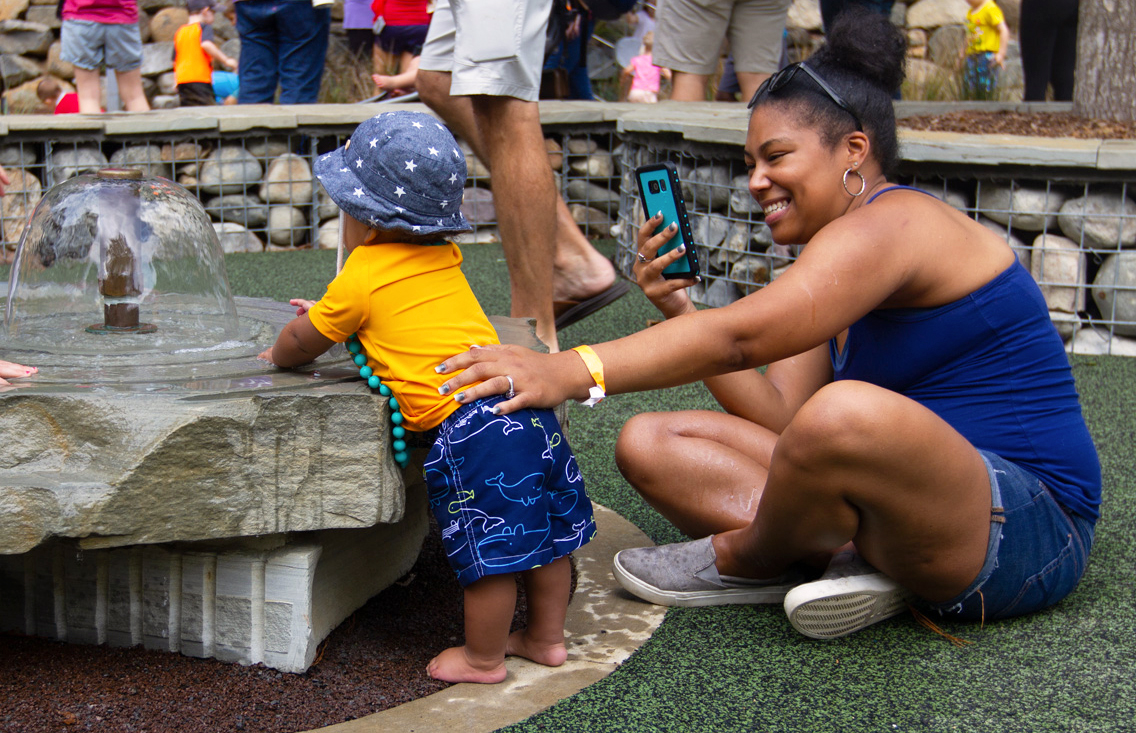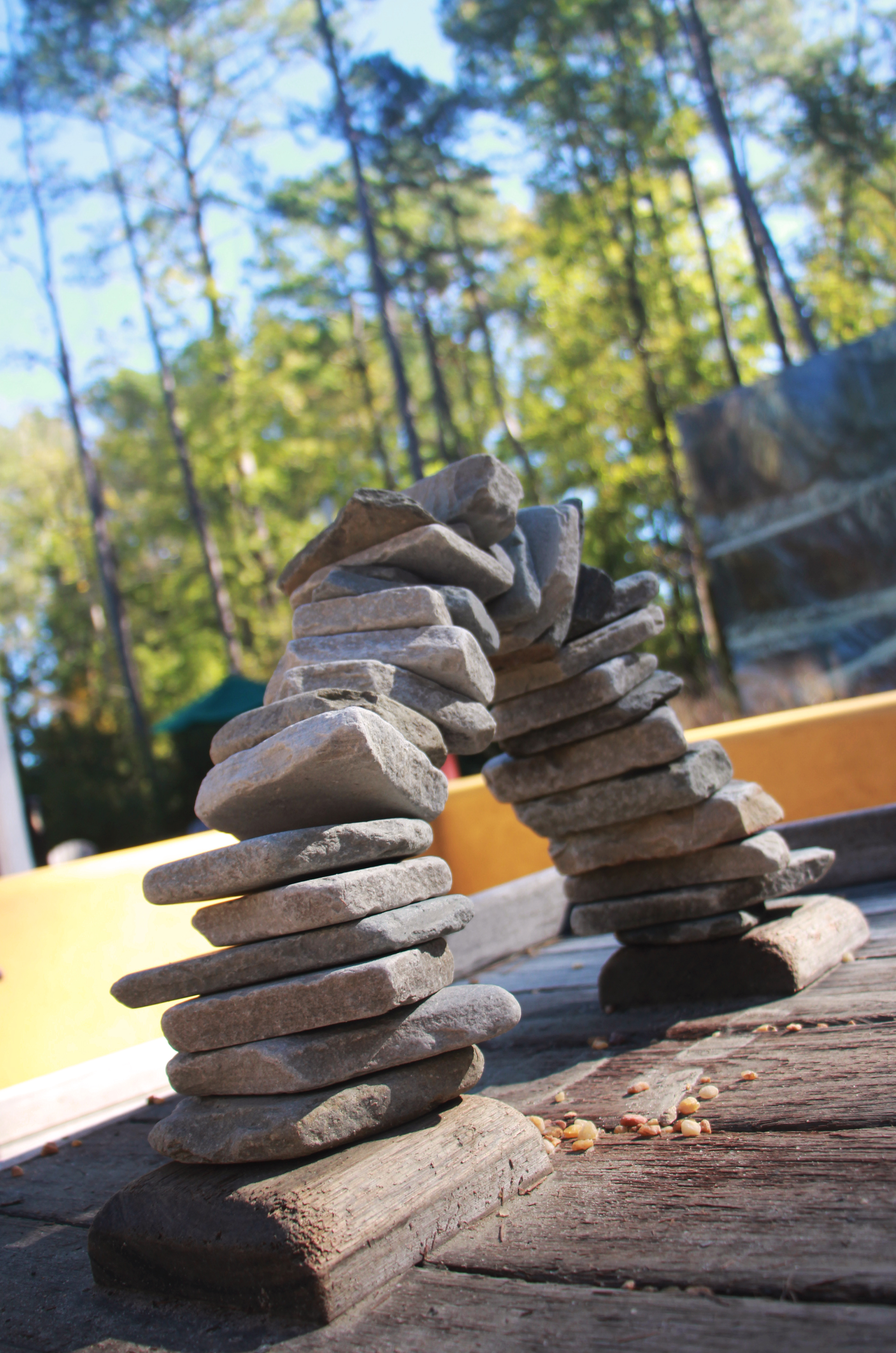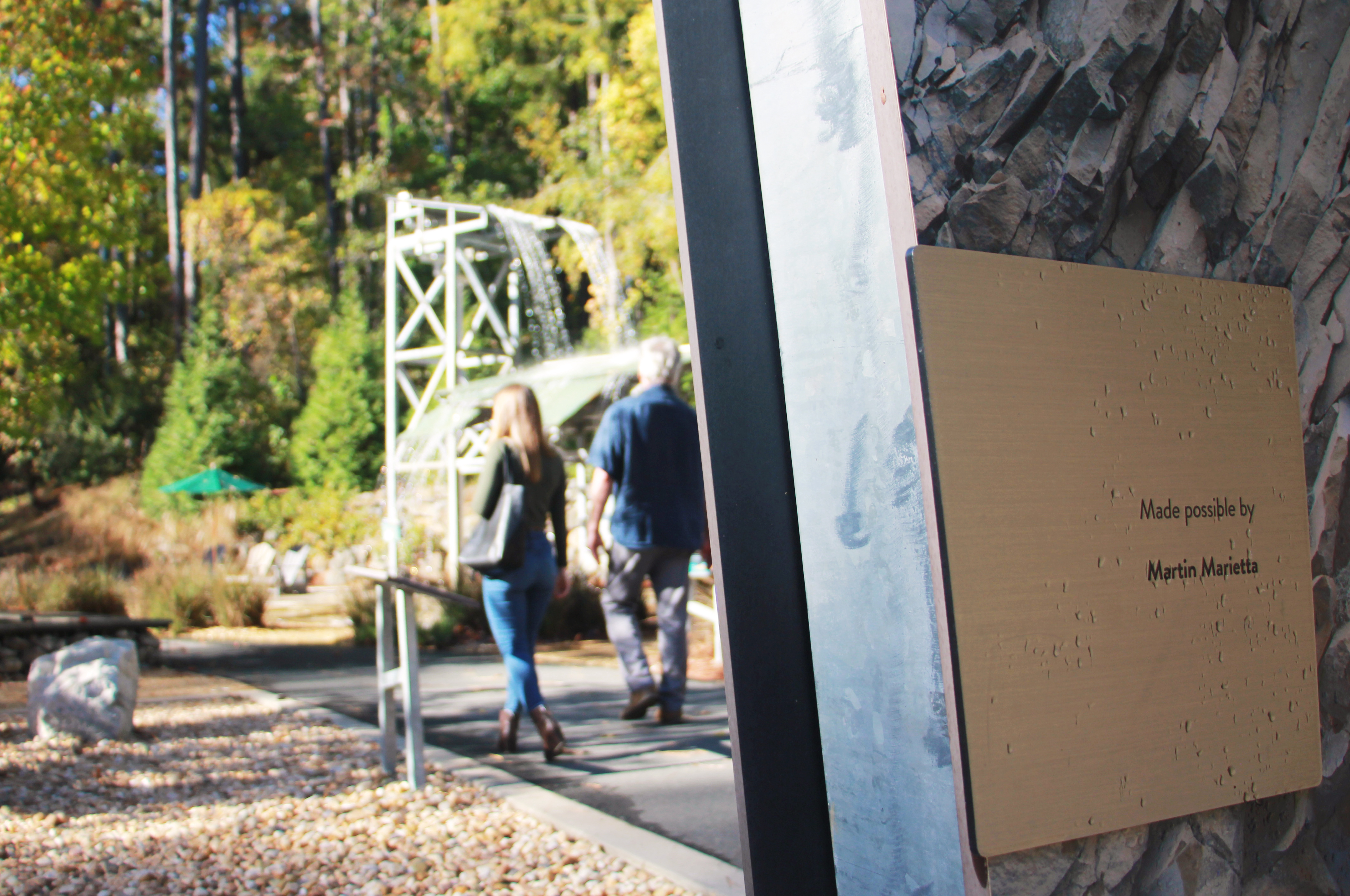NEWS ARTICLE
An experience of discovery
With company support, life and science museum seeks to inspire

Filled with families, the line to enter stretched around the corner with staff politely asking members to limit their stay to 45 minutes. At its start, the Earth Moves exhibit was, by every measure, a smashing success. Then came COVID-19.
Earth Moves, which debuted at the Museum of Life and Science in Durham, North Carolina, in summer 2019, experienced the peaks and valleys familiar to all outdoors exhibits with numbers climbing in the warm months and declining in the late fall and winter. Just as museum staff were preparing to ramp the exhibit back up for its first full season, the world shut down.
“We shut down in March and it wasn’t until July 2020 that we were able to re-open the exhibit,” says Michele Kloda, the museum’s director of learning environments. “It was actually quite beautiful. It gave people a respite and an opportunity they couldn’t find anywhere else. We had people come to us with tears in their eyes and thank us for this. To offer something like that to parents and children was significant for us.”
Though still early in its life, Earth Moves, with support from IMµç×Ó, has already had a meaningful impact. What excites museum staff most, however, is the effect it will most certainly have in the future.
Carrie Heinonen, president and CEO of the museum, says she and her team annually welcome about 500,000 guests – most of them young children who are experiencing many elements of science for the first time. Knowing this, she and her team take their work seriously.
“First and foremost, it’s about inspiring kids to see the practical, fun and engaging side of science and math,” Heinonen says. “Secondarily, the way we build out exhibitions, and our programming around those exhibitions, seeks to enhance critical thinking skills in children. We don’t want to give them the answers, we want to encourage them to discover the answers for themselves.”

Covering just about 1 acre, Earth Moves does just that.
From its initial conception through to its grand opening, the exhibit took about five years to build and includes a number of multi-purpose elements that are designed to appeal to a wide variety of children and adults.
The waterfall and erosion stream, for example, do a wonderful job of keeping people cool in the summer, but also teach about how water and rock react to one another. At a simple glance, the stone yard seems like a fun place to stack rocks, but it also provides the chance to get hands on with a wide number of different stone types. All of it is possible, in part, because of IMµç×Ó.
The company is currently in the middle of an agreement to provide $100,000 in funding over a five-year period. Additionally, the museum has received about 11 tons of in-kind donations from 14 different quarries.
Much of that material can be seen in Earth Moves, which, from its sandstone exploration cave to its sculptures and walls, is almost entirely made of stone. Some of the exhibit’s largest rocks are boulders that originated in 12 IMµç×Ó quarries in North Carolina, South Carolina, Georgia, Virginia and Maryland, said Senior Manager of Geological Services Josh Kirby.
Kirby said IMµç×Ó’s geology and exploration groups worked closely with East Division operations staff to facilitate the boulder donation with the goal of showcasing the wide variety of rock types present in the Mid-Atlantic region of the United States.
“We started by reaching out to our plant managers, who all were very excited about this opportunity,” Kirby says. “We then sent out our geologists, who worked with our operations teams to select samples that were of interest. Our exploration crews then picked up and prepared each sample for delivery.”

Once the boulders were placed, Kirby and his team prepared a brief writeup for each, detailing the rock type, the original location and other relevant background information. In total, the process took several months from start to finish, Kirby said.
Kloda says the boulders are very much a draw in the exhibit, which also includes a sheltered classroom space where children can participate in geology-related workshops.
While IMµç×Ó and the Museum of Life and Science both have an interest in educating the public, doing so safely is the top priority. Just as company teams seek to minimize potential hazards, so, too, does the museum staff.
“We think about it in terms of hazards versus healthy risks,” Kloda says. “We tell visitors that they may get bumped here because that’s part of being outside. And that’s okay. This is all about body participation. What we don’t want are hazards. If we identify hazards, we work to eliminate them.”
To that end, the exhibit is built with fall surfaces in areas where climbing is likely to take place. While it is expected that visitors will climb the stone walls, they are asked to avoid taller sculptures and the stone cave’s roof, among other areas. Staff and volunteers have also learned where to position themselves in order to provide assistance to children who may need it.
The results are apparent.
Because of his work on the project, Kirby, along with his wife, Laura Kirby, and daughters, Emma (8), Norah (6) and Clara (4), were among the first to visit the exhibit in mid-summer 2019.
“As a parent, I think it’s great,” Kirby says. “My wife and I favor the outdoors exhibits and my kids enjoy water, sand and rocks. This has all of the above. It’s a great way for families to experience science.”
Where Did the Earth Moves Boulders Come From?
- Belgrade Quarry (Coastal Limestone)
- Bessemer Quarry (Spodumene Pegmetite)
- Kannapolis Quarry (Granite)
- Asheboro Quarry (Slate)
- Newton Quarry (Gneiss)
- Rock Hill Quarry (Gabbro)
- Benson Quarry (Metavolcanic)
- Kings Mountain Quarry (Marble & Schist)
- Texas Quarry (Marble)
- Cumming Quarry (Quartzite & Amphibolite)
- Bonds Quarry (Syenite)
- Midlothian Quarry (Granitic Gneiss)
